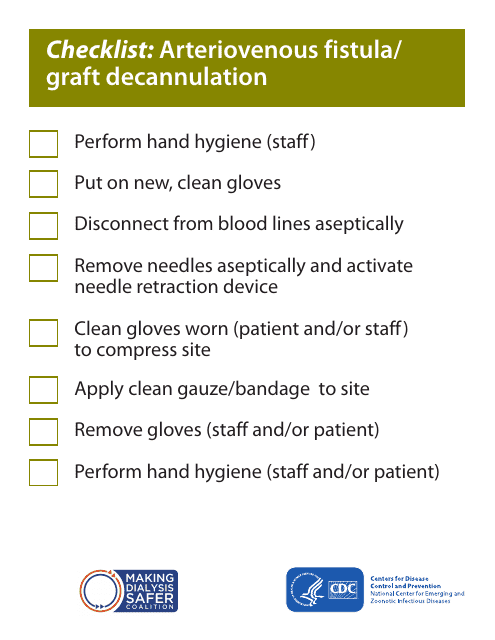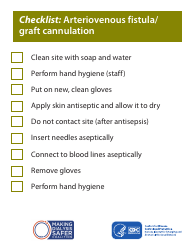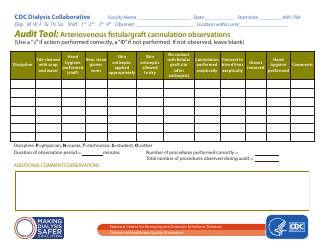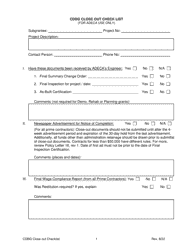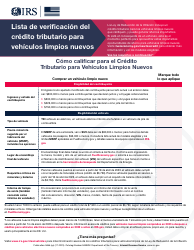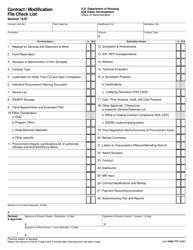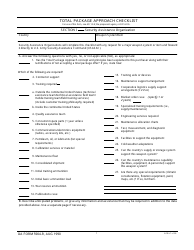Checklist: Arteriovenous Fistula / Graft Decannulation
Checklist: Arteriovenous Fistula/ Graft Decannulation is a 1-page legal document that was released by the U.S. Department of Health and Human Services - Centers for Disease Control and Prevention and used nation-wide.
FAQ
Q: What is arteriovenous fistula/graft decannulation?
A: Arteriovenous fistula/graft decannulation refers to the removal of a cannula from an arteriovenous fistula or graft, which is a surgical connection between an artery and a vein.
Q: Why would someone need arteriovenous fistula/graft decannulation?
A: Decannulation is necessary when a cannula is no longer needed for blood access in a patient with an arteriovenous fistula or graft.
Q: How is arteriovenous fistula/graft decannulation performed?
A: Arteriovenous fistula/graft decannulation is typically performed by a healthcare professional using sterile technique. It involves carefully removing the cannula while ensuring minimal bleeding and maintaining the integrity of the fistula or graft.
Q: Is arteriovenous fistula/graft decannulation a painful procedure?
A: The procedure itself is usually not painful, as local anesthesia or sedation may be used to minimize discomfort. However, some patients may experience mild pain or discomfort during or after the procedure.
Q: Are there any risks or complications associated with arteriovenous fistula/graft decannulation?
A: While arteriovenous fistula/graft decannulation is generally a safe procedure, there are potential risks and complications, including bleeding, infection, damage to the fistula or graft, and the need for further interventions.
Form Details:
- The latest edition currently provided by the U.S. Department of Health and Human Services - Centers for Disease Control and Prevention;
- Ready to use and print;
- Easy to customize;
- Compatible with most PDF-viewing applications;
- Fill out the form in our online filing application.
Download a printable version of the form by clicking the link below or browse more legal forms and templates provided by the issuing department.
